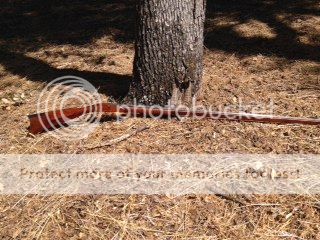Grizzly Adams
50 Cal.
- Joined
- Jul 21, 2014
- Messages
- 1,049
- Reaction score
- 2
Loyalist Dave said:Again, you're not "wrong" in wanting a .58.
Being in TN and wanting a classic TN rifle isn't wrong either. I love that particular style, though it is post Rev War. I happen to think a TN rifle in .40 is a classic combination, but that's my opinion...
...I should think that a stout load from anything larger than a .50 would be rather hard on the slender wrist one finds on a classic TN stock. But if you want a .54 or .58 then go with something like a "Southern Rifle" or "Virginia rifle" in iron with the more robust stock.
LD
I am a fan of TNs in .40 as well.

:grin:
As for the thin wrists, you ever look closely at somebody seating a ball on the powder of a thin wrested gun? Know whatcha see? Flex. It is one thing to have that happen when loading, but another to compound that with impact and shock. Not to mention, the drop of the stock makes a fine lever on the wrist.






